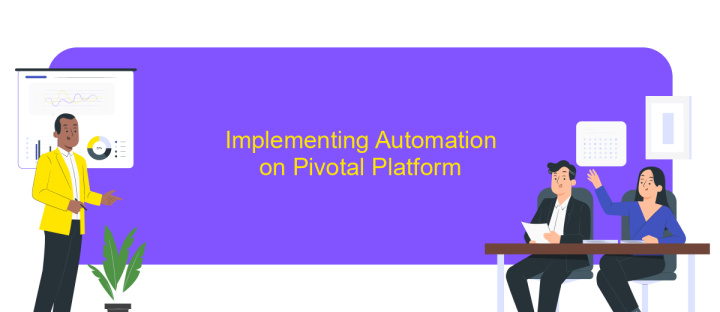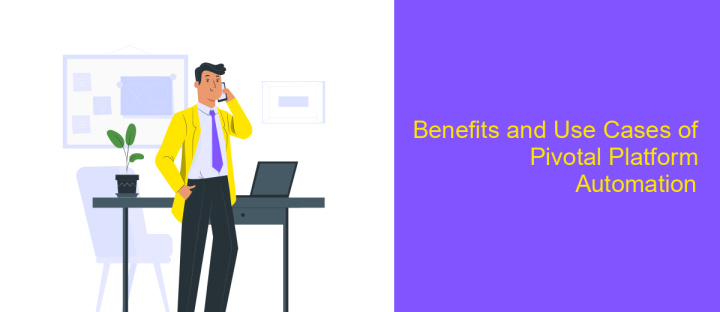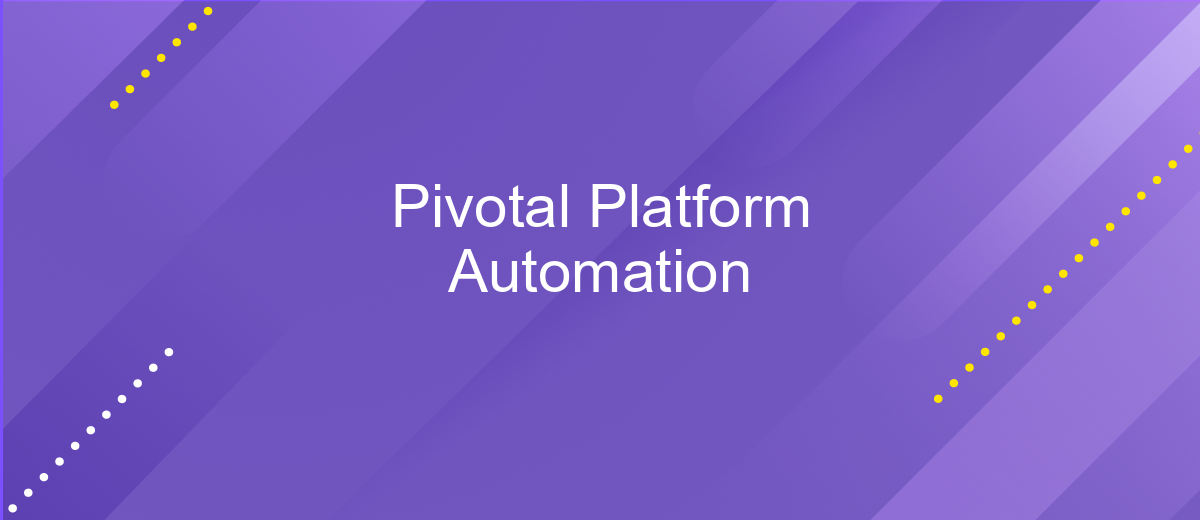Pivotal Platform Automation
Pivotal Platform Automation is revolutionizing the way organizations manage and deploy applications in the cloud. By streamlining processes and reducing manual intervention, it empowers teams to focus on innovation and efficiency. This article explores the key features, benefits, and best practices of Pivotal Platform Automation, highlighting how it enables businesses to enhance scalability, reliability, and agility in today's rapidly evolving technological landscape.
Introduction to Pivotal Platform Automation
Pivotal Platform Automation is a transformative approach that streamlines and optimizes the deployment, management, and scaling of applications within the Pivotal ecosystem. By leveraging automation, organizations can significantly reduce the time and effort required to manage complex cloud environments, ensuring consistent and reliable application performance. This approach not only enhances operational efficiency but also empowers development teams to focus on innovation rather than infrastructure maintenance.
- Automated provisioning of resources to meet dynamic application demands.
- Seamless integration with existing CI/CD pipelines for continuous delivery.
- Enhanced monitoring and logging for proactive issue resolution.
- Scalability and flexibility to adapt to changing business needs.
- Improved security through automated compliance checks and updates.
Adopting Pivotal Platform Automation can lead to substantial gains in productivity and agility, enabling organizations to respond swiftly to market changes and customer demands. It fosters a culture of continuous improvement and innovation, where teams are equipped with the tools and processes needed to deliver high-quality software at speed. As businesses increasingly rely on digital solutions, the role of automation becomes crucial in maintaining a competitive edge in the fast-paced technology landscape.
Key Automation Features and Capabilities

Pivotal Platform Automation streamlines the deployment and management of applications, providing a seamless experience for developers and operators. One of its key features is the automated provisioning of resources, which ensures that applications have the necessary infrastructure without manual intervention. This automation reduces the risk of human error and accelerates the deployment process, allowing teams to focus on innovation rather than routine tasks. Additionally, the platform offers self-healing capabilities, automatically detecting and resolving issues to maintain optimal performance and reliability.
Another significant capability is the integration of third-party services through streamlined APIs. Tools like ApiX-Drive can be utilized to facilitate these integrations, enabling seamless connectivity between various applications and services. This not only simplifies the workflow but also enhances the scalability of the platform by allowing users to easily incorporate new functionalities as needed. Moreover, Pivotal Platform Automation supports continuous delivery pipelines, ensuring that updates and new features are deployed efficiently and consistently, further enhancing the agility and responsiveness of the development process.
Implementing Automation on Pivotal Platform

Automating processes on the Pivotal Platform significantly enhances operational efficiency and reduces human error. By leveraging automation, teams can streamline deployments, manage resources more effectively, and ensure consistent application performance. It allows developers to focus on building features rather than managing infrastructure, thereby accelerating the development lifecycle.
- Identify repetitive tasks and processes that can benefit from automation.
- Select appropriate tools and frameworks that integrate seamlessly with Pivotal Platform.
- Develop and test automation scripts to ensure they perform as expected.
- Implement continuous integration and delivery (CI/CD) pipelines to automate deployments.
- Monitor automated processes and make adjustments as needed to maintain efficiency.
Implementing automation on the Pivotal Platform not only improves productivity but also enhances the reliability of applications. By adopting best practices and continuously refining automated processes, organizations can achieve a more agile and responsive IT environment. This strategic approach to automation supports scalability and helps maintain competitive advantage in rapidly changing markets.
Benefits and Use Cases of Pivotal Platform Automation

Pivotal Platform Automation streamlines the deployment and management of applications, significantly reducing manual intervention. By automating routine tasks, organizations can enhance operational efficiency and minimize human errors, leading to more reliable software delivery.
This automation is particularly beneficial in environments where rapid scaling and frequent updates are necessary. It allows teams to focus on innovation rather than repetitive tasks, thus improving productivity and agility. With Pivotal Platform Automation, businesses can respond swiftly to market demands and technological changes.
- Accelerated application deployment and updates
- Enhanced consistency across environments
- Reduced operational costs and resource allocation
- Improved compliance and security management
- Facilitated continuous integration and delivery (CI/CD)
By leveraging these benefits, organizations can achieve a competitive edge in the digital landscape. Pivotal Platform Automation not only optimizes resource utilization but also ensures that applications are more resilient and adaptable. This makes it a crucial component for businesses aiming to maintain a robust and scalable IT infrastructure.


Best Practices and Future Directions
Implementing best practices in Pivotal Platform Automation involves streamlining processes to enhance efficiency and reliability. One key approach is to adopt continuous integration and delivery (CI/CD) pipelines, ensuring seamless updates and minimizing downtime. Regularly auditing and updating automation scripts is crucial to adapt to evolving requirements and technologies. Utilizing tools like ApiX-Drive can further enhance integration capabilities, allowing for seamless data flow between disparate systems and reducing manual intervention.
Looking towards the future, the focus should be on incorporating AI and machine learning to predict and resolve potential issues before they impact operations. Embracing containerization and microservices architecture can offer greater scalability and flexibility, allowing organizations to respond swiftly to changing demands. Additionally, fostering a culture of collaboration and continuous learning among teams will be essential in adapting to new technologies and methodologies, ensuring that the automation processes remain robust and future-proof.
FAQ
What is Pivotal Platform Automation?
How can automation benefit my Pivotal Platform operations?
What are some key components of Pivotal Platform Automation?
How can I integrate third-party services with Pivotal Platform Automation?
What challenges might I face when implementing Pivotal Platform Automation?
Strive to take your business to the next level, achieve your goals faster and more efficiently? Apix-Drive is your reliable assistant for these tasks. An online service and application connector will help you automate key business processes and get rid of the routine. You and your employees will free up time for important core tasks. Try Apix-Drive features for free to see the effectiveness of the online connector for yourself.

